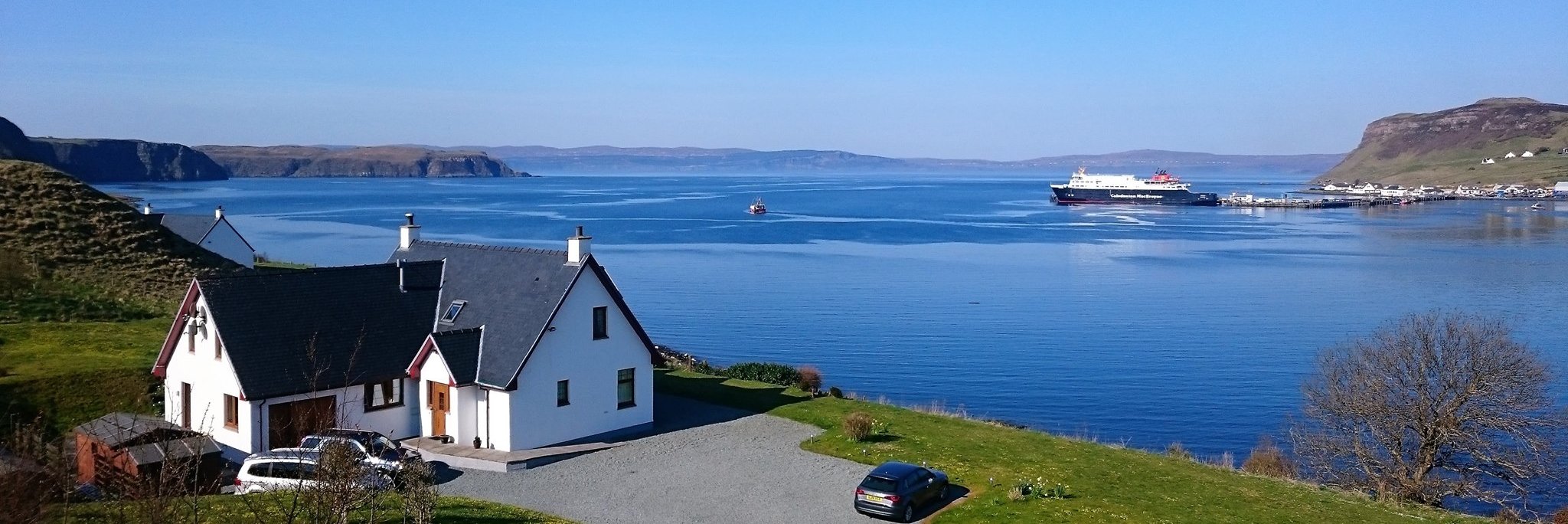Scotland's Best B&Bs
Scotland is probably Europe's top wildlife watching destination.
It has an incredible variety of birds, mammals, butterflies and insects. Many of the species here are rare but may be glimpsed in the wild by the keen eyed visitor or viewed at close quarters in one of Scotland's wildlife parks. You will always remember the thrill of watching your first golden eagle soaring high in the sky or coming across your first majestic stag standing proudly on the hillside before leaping away to safety.
Watch out for red deer singly or in herds on the hills especially in the Highlands and Islands. They are most easily seen in the colder months when they descend from the higher slopes to more sheltered ground, climbing higher again as the weather gets warmer. Sometimes in the summer, when out walking, you may surprise one in the woods. The annual red deer rut in the autumn is a spectacular sight.
Birds of prey commonly seen circling over wooded areas are probably buzzards. In the Highlands, a large bird with feathered wing tips circling slowly high over the bens and glens may well be a golden eagle rather than a buzzard.
Red kite have been re-introduced and are doing well, particularly on the Black Isle in the Highlands. Ospreys, re-introduced around 50 years ago at Loch Garten in the Cairngorms, are now frequently seen on many rivers and lochs in the late spring and early summer and numbers are growing all the time. The sea eagle, also known as the white tailed eagle, was re-introduced in 1975 and is increasingly seen on the west coast, soaring over the island of Mull and in the Inner Hebrides.
All our recommended B&Bs are operated every day by the owners, who live on site
The elusive and very shy Scottish wild cat is rarely spotted, but is unmistakable with a heavier build than the domestic cat, gingery colouring and ringed markings on its thick tail. With a little local knowledge, and a good deal of patience, you may be rewarded with a sighting of an otter fishing in a river or in sea and freshwater lochs. Pine martens are agile climbers and the largest member of the weasel family. They are forest dwellers but are often attracted to bird tables in rural gardens.
Native red squirrels are less confident and less aggressive than the larger grey squirrels which are gradually taking over the red squirrel territory and displacing them. However, 90% of British red squirrels are to be found in Scotland, predominantly in the Highlands. They can be spotted in mixed woodland and chatter angrily when disturbed.
Around 100,000 grey seals live and breed around Britain's shores, with Scotland's rugged coastline and multitude of islands supporting the majority of the population. There are also sizeable colonies of common seals to be seen. It's almost inevitable that you will obtain sightings of these fascinating mammals lazing on rocks or heads bobbing in the sea.
The Cairngorms National Park is home to the very rare capercaillie, the largest member of the grouse family, and crossbills which are uniquely adapted to feed on pine tree seeds. Late evening or dawn are the best times to visit one of the 'lekking' grounds of the black grouse where the males display and try to attract a mate.
Wintertime is when deer can be seen more easily, although it may be a little challenging to spot those species which change into their white winter plumage or fur, such as ptarmigan, stoats or mountain hares.
Wildlife in Aberdeen, Grampian and Moray
Wildlife in Argyll, The Isles, Loch Lomond, Stirling and The Forth Valley
Wildlife in Ayrshire and Arran
Wildlife in Dumfries and Galloway
Wildlife in Edinburgh and Lothians
Wildlife in Glasgow, The Clyde Valley and Lanarkshire
Wildlife in The Highlands and Isle of Skye
Sign up to Scotland's Best B&Bs Newsletter to receive our Latest Offers and Packages.

Please feel free to share the content of this page with your friends – simply click on where you would like to share it.